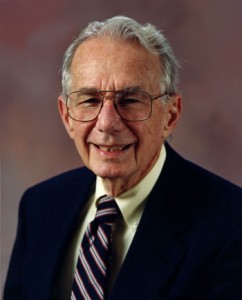In a recent news release for a cleantech client I struggled to quantify the energy savings and environmental impact that the technology delivered in a meaningful way. Communicating clean energy benefits can often trigger a mish-mash of metrics, like energy units (e.g. kilowatts/hour) made, dollars saved or potential pollutants scrubbed from the atmosphere.
 To that end, Scientific American introduces us to a new scientific measurement for energy savings called the “Rosenfeld” named after the so-called “godfather of energy efficiency,” Scientist Arthur Rosenfeld.
To that end, Scientific American introduces us to a new scientific measurement for energy savings called the “Rosenfeld” named after the so-called “godfather of energy efficiency,” Scientist Arthur Rosenfeld.
One Rosenfeld equals an energy savings of 3 billion kilowatt-hours per year — the same amount generated by a 500-megawatt coal-run power plant. As Scientific American describes it, the Rosenfeld metric provides a much needed:
“… measurement that would help regular people visualize efficiency’s massive potential, but also be as accurate as possible.”
Weight Watchers have calories, cars have MPG and my woodstove boasts in BTUs. It’s not a bad idea that communications pros in clean tech industries coalesce around a standard, meaningful unit of energy savings measurement. And while we’re at, let’s nickname it the Rosy for simplicity’s sake.